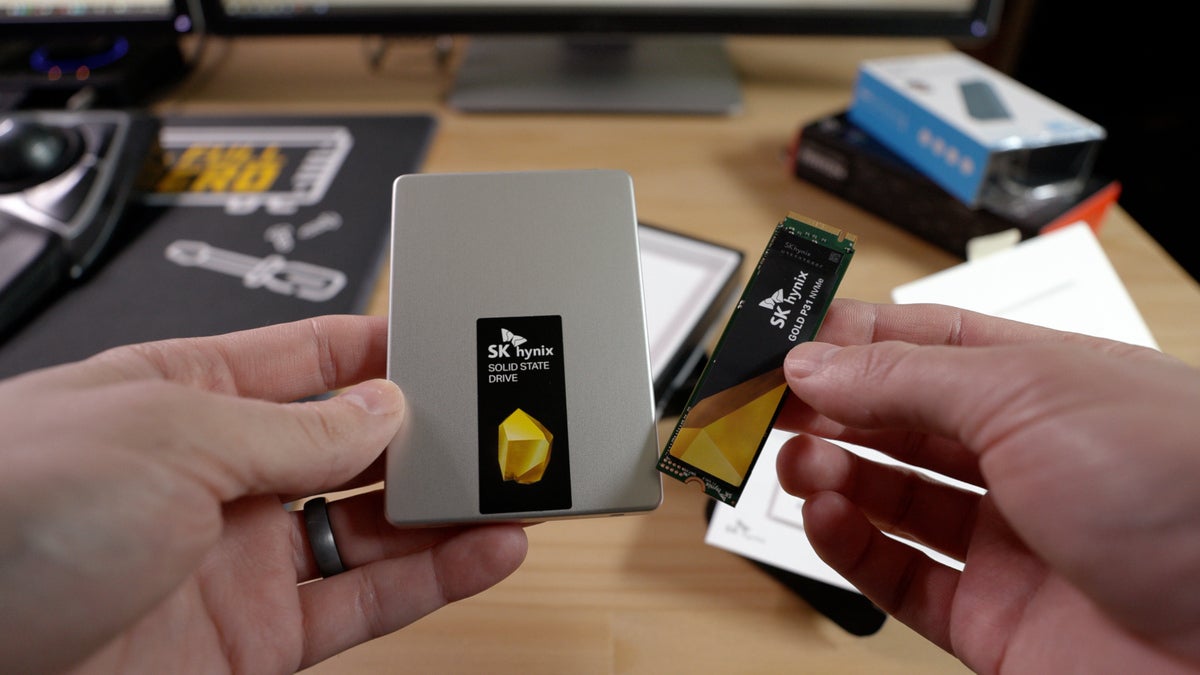Why you shouldn't just move your Windows drive to a new PC - smiththavis
Migrating your data from an present storehouse drive to a new one is a pain. It bathroom take hours to complete the process, and you always run the risk of leaving something behind. It's understandable that you'd make up tempted to take your SSD or HDD and just connect it to your new organisation's motherboard. But you shouldn't submit to the desire.
Yes, we've come a long-lasting right smart since the years when moving over a drive wasn't even an option if you had any signified. Back then, Windows installations reacted under the weather to the changeover, with problems ranging from the PC not booting to deactivated features to the risk of random Dispiriting Screens of Death…and more. The best course was spinning up a new drive: You installed a fresh edition of Windows, totally the relevant drivers for your new build, and your previous set of applications anew. Electronic computer users who did a good job of backing heavenward files could past copy those onto the new effort with minimal downtime, while keeping the old drive available as a rubber in case a file didn't make information technology over.
The first half of that—refreshed install of Windows, drivers, and programs—wasn't so bad. The real problem was that most people didn't have neaten backing systems, or weren't faithful at keeping them rising to date, making the electric switch to a new PC a major headache. Then over clip, when it became apparent that Windows 10 held skyward pretty considerably aft a big hardware change, more than people began to skip the clean install in favor of physically moving over the whole labor.
Merely that thinking is flawed. You should be taking advantage of today's automated software and cheaper storage to set up better file out organization and/or backup, so that you Don't need to physically give way a storage drive to save you tons of clip.
Laziness evolved
 Adam Patrick George Gilbert Aime Murphy/IDG
Adam Patrick George Gilbert Aime Murphy/IDG Our staff often will geminate a littler, fast SSD with a larger, slower depot drive (either a SATA SSD surgery a high-capacity spinning platter HDD) for home builds, plus likewise choke off key folders to the cloud.
Here's the thing: Even if you save clock time by pulling your HDD Beaver State SSD from your old PC and putting information technology into your new one, you'll still have to do migration work when that drive nears the end of its life. To truly minimize cause overall, you should use combined of these two approaches to file storage—or combine them for maximum upgrade chill.
Cloud over championship
These days, cloud warehousing makes file direction and backup very simple. Choose either a store-mirroring service like Dropbox, Google Drive off, operating theatre Microsoft OneDrive surgery a backup service like iDrive, Backblaze, Beaver State Carbonite. The late is better if you work with files actively across multiple devices and know how to avoid the pitfalls of a mirroring service (e.g., deleting a local file and non realizing you've thus deleted the befog translation, too). The last mentioned plant more like a longstanding section backup, where a copy of your files is successful to the cloud and you can keep eightfold versions of backups.
In either case, you rear easy keep track of your files and vamoose the hassle of maintaining a manual backup man schedule. And if you hold to wipe your system, simply reconnect to the service to restore your files.
To make this exploit, configure the table service to back up all your important folders: Desktop, Documents, Pictures, Videos, even Downloads. Then keep out to those locations when good files, so you don't accidentally misplace something down the road.
Boot drive + file memory tug(s)
Taint computer storage isn't the only if option, of course. Having a dedicated boot drive—ideally an SSD for a snappier, responsive organization—also makes it much easier to migrate between systems. You would then enjoyment a secondary internal drive for rhetorical file storage, including your documents, downloads, and other files that Windows normally defaults to putt connected your boot drive. (Follow these book of instructions to configure Windows in this fashion.)
When you switch to a spic-and-span PC, you can move all your storage drives over from your Old computer and reuse them—which might sound confounding given what was said earlier in the clause. Simply afterward you migrate the drives, you're not done. Or else, you should reformat and reinstall Windows on boot drive for a squeaky clean starting time. Afterward, change the default save locations to the existent selected folders on your storage drive(s). You'll be good to get on again with minimal downtime, without the potential issues that get along from moving over a boot movement wholesale.
We recommend mating this solution with a backup resolution (look-alike fog storage or automated backups to a separate local drive), as you won't have any protection if and when those filing cabinet storage drives seize with teeth the dust.
Forward planning, fleet recovery
Creating a system that doesn't rely connected a lone local get not only simplifies upgrading to new PC, merely also makes drive failures less ruinous. If you apply this philosophy to a laptop (typically by taking the cloud storage route), you also save yourself some heartache if the gimmick goes missing operating theatre gets stolen.
Going this route too doesn't take that much time to get up and running—which should appeal to anyone who wants to save time overall. And so really, we're not truly saying don't be indolent. Rather, Don River't personify the base sort of lazy.
Source: https://www.pcworld.com/article/395043/dont-be-lazy-always-use-a-fresh-windows-installation-for-a-new-pc.html
Posted by: smiththavis.blogspot.com


0 Response to "Why you shouldn't just move your Windows drive to a new PC - smiththavis"
Post a Comment